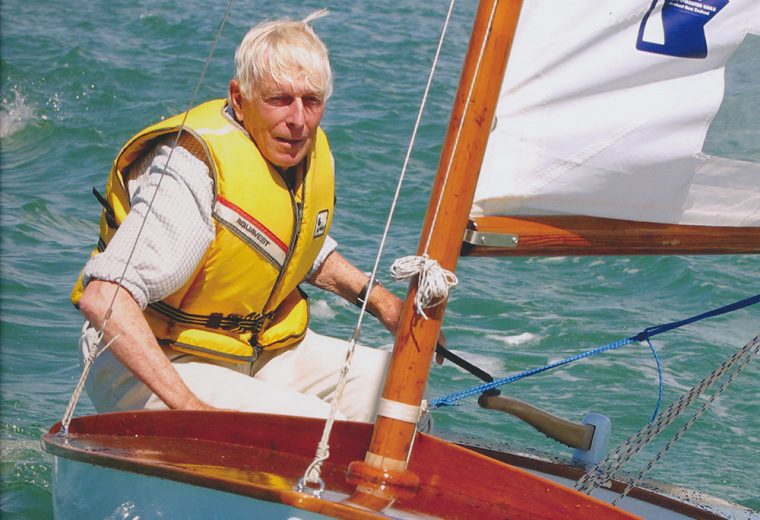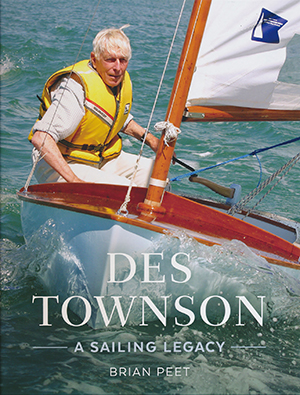Book Review: Des Townson, a sailing legacy


Des Townson: A Sailing Legacy
by Brian Peet
Mary Egan Publishing
343pp NZ$80
Reviewed by David Salter
Des Townson is part of an impressive succession of Kiwi yacht designers and builders that stretches from Logan through Warwick and Davidson to the ubiquitous Bruce Farr. Like our own Bob Miller/Ben Lexcen, he had little formal training. His designs, and the way his firm built them, were based on instinct and hard-won experience.
Townson died in 2008 but his contribution to New Zealand sailing endures in 78 individual designs and the 3,716 boats that have been built to those lines. Des Townson: A Sailing Legacy is a handsome large-format book that chronicles his life and his development from the designer of small skiffs to substantial cruiser/racers.
The author, Brian Peet, is clearly a huge admirer of Townson’s work but that did not prevent him from acknowledging his subject’s rather prickly and demanding character. Des had firm views and a tremendous capacity for hard work – aspects of a boat-builder’s life that can easily lead to impatience and intolerance. Townson, despite his many achievements and generosity, was until his later years something of an outsider in the New Zealand sailing community.
But what a tremendous range of boats he created! His early centerboard designs are little known in Australia but still immensely popular classes in NZ. Hundreds of the Mercury, Zephyr, Starling and Mistral skiffs still race today more than 50 years after Townson first drew their lines and then built hulls for sale from his modest Auckland workshop.
 His first small yachts in the late 1950s owed much to the traditional Mullet boats but already showed the distinctive sweet sheer and curved cabin tops that became his design trademark. Townson’s 22’ Pied Piper – an affordable, fractional, hard-chine plywood keelboat for racing and cruising – became an instant hit after its launch in 1964 and still races as a healthy class today.
His first small yachts in the late 1950s owed much to the traditional Mullet boats but already showed the distinctive sweet sheer and curved cabin tops that became his design trademark. Townson’s 22’ Pied Piper – an affordable, fractional, hard-chine plywood keelboat for racing and cruising – became an instant hit after its launch in 1964 and still races as a healthy class today.
A long series of carvel keelboats in the 32-40 foot range followed, some of which ended up in Australia. Doug Sturrock’s Windflyt is an excellent example. They are instantly recognizable as “Townsons”, and there is some truth to the view that Des tended to design the same boat many times, just varying the dimensions and internal layout to suit each client.
In that sense he was much like another self-taught designer/builder, Ron Swanson, who found a successful formula with Cadence and Camille and sustained a business by building sturdy variations on that basic design.
Brian Peet has produced an excellent account of Townson’s life and work, based on exhaustive research and more than a hundred interviews with Des, his family, friends, workmates and the broader New Zealand sailing world. The illustrations are fascinating and the overall production excellent. It is a fitting tribute to a man who had such an enormous influence on the sport in his country.
We should note, with some embarrassment, that the book was produced with the generous financial support of a New Zealand trust founded to “practice, teach, develop and promote the specific principles and practices of New Zealand’s classic heritage vessels.”
What a pity that Australia has no similar charity to honour our own splendid traditions of design and construction.

